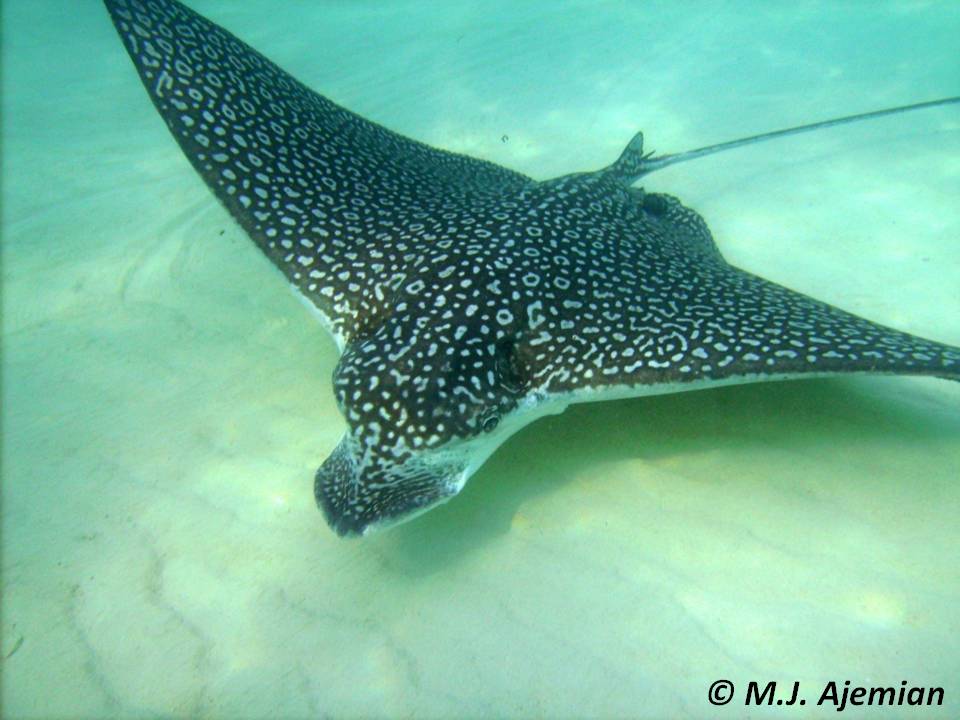
Video Spotted Eagle Rays In Flatts Inlet Bernews
Reaching nearly 11 feet long, the spotted eagle ray is one of the largest eagle rays, with only the mantas growing bigger. Spotted eagle rays, like all eagle.

IZE BELIZE International Zoological Expeditions, Inc. Marine
Crunch Time - Like other stingray species, eagle rays have flat plates rather than typical teeth. They use these plates to crush crustaceans like crabs, clams, shrimp, and more. Shovel Nose - Some species, like spotted eagle rays, will use their flattened snouts to dig in sand or mud. Oftentimes their prey is buried in the sand, and this.
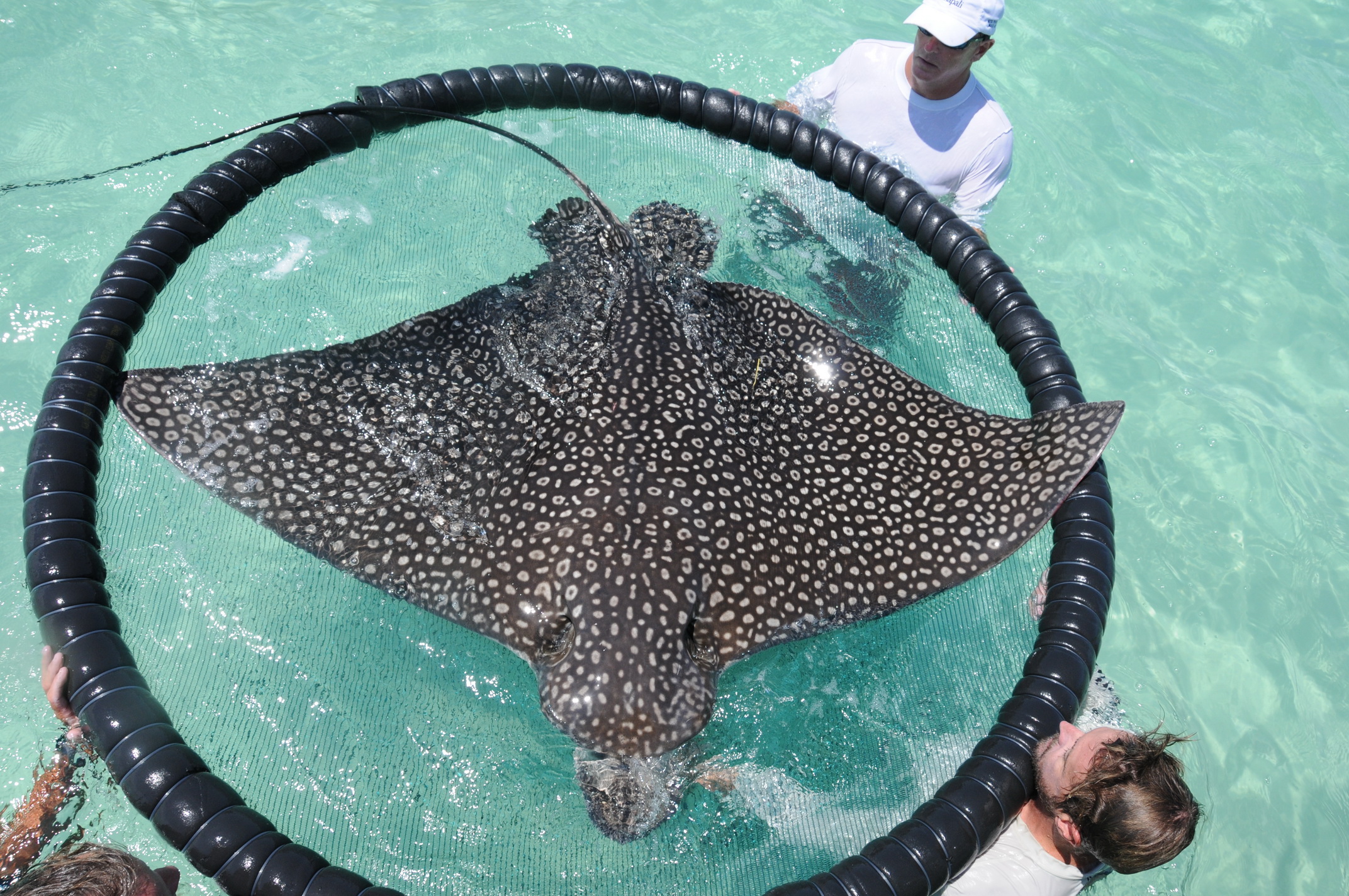
Spotted Eagle Ray Update California Academy of Sciences
The spotted eagle ray (Aetobatus narinari) is a cartilaginous fish belonging to the eagle ray family of stingrays.Its common name comes from its distinctive spots, fins that flap like wings, and protruding snout that resembles an eagle's beak or duck's bill. Usually, the ray is a solitary predator, but it sometimes swims in large groups.
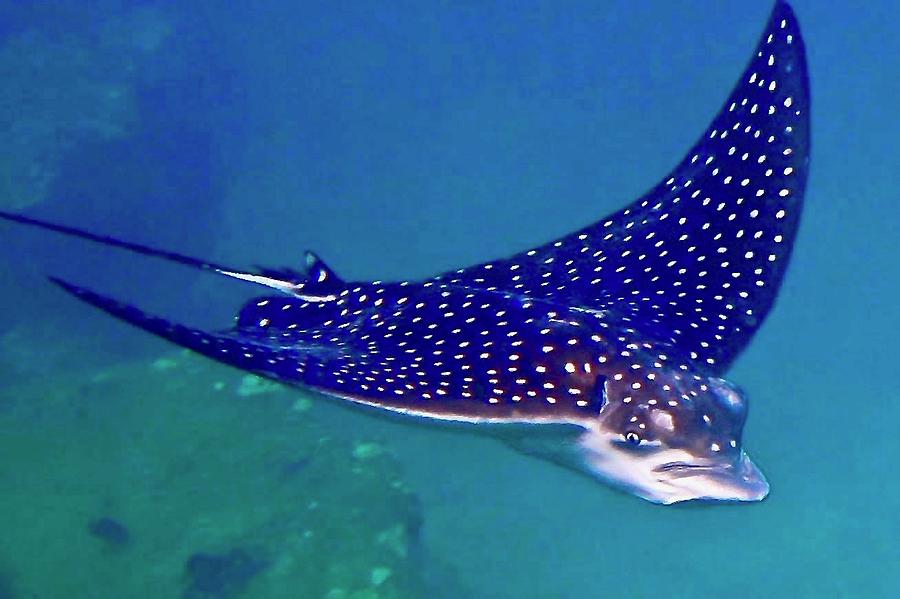
Spotted Eagle Ray Photograph by Kirchgessner Fine Art America
Spotted eagle rays can live in schools as big as 100 individuals! Eagle Ray Habitat. Eagle rays thrive in the warm tropical waters of the Pacific and Indian oceans. While most bottom-feeding fish live in very deep water, these fish live close to the surface of water bodies, anywhere down to 100 feet..
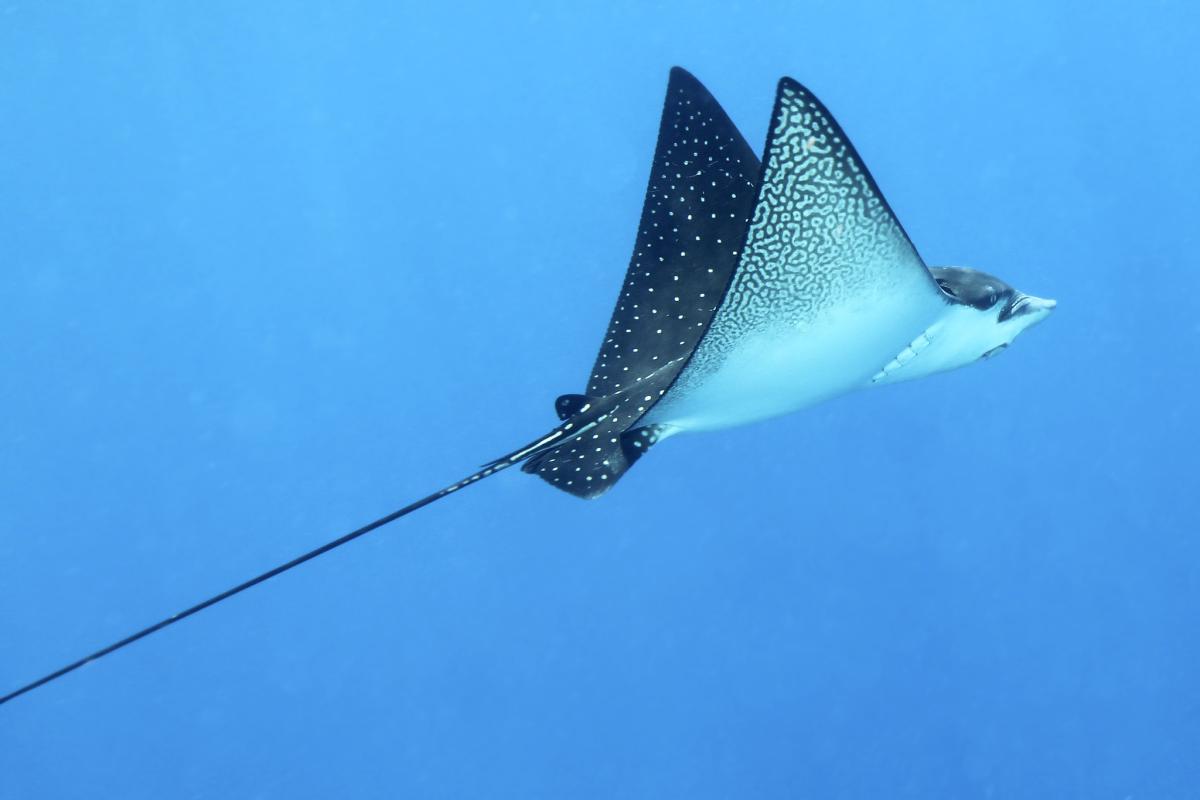
spotted eagle ray Tetiaroa Society
The spotted eagle ray is a majestic ray species. The spotted eagle ray, also known as Aetobatus narinari, is a remarkable ray species that belongs to the Myliobatidae family. With its distinctive spotted pattern and graceful movements, it is a fascinating creature to observe in the ocean.
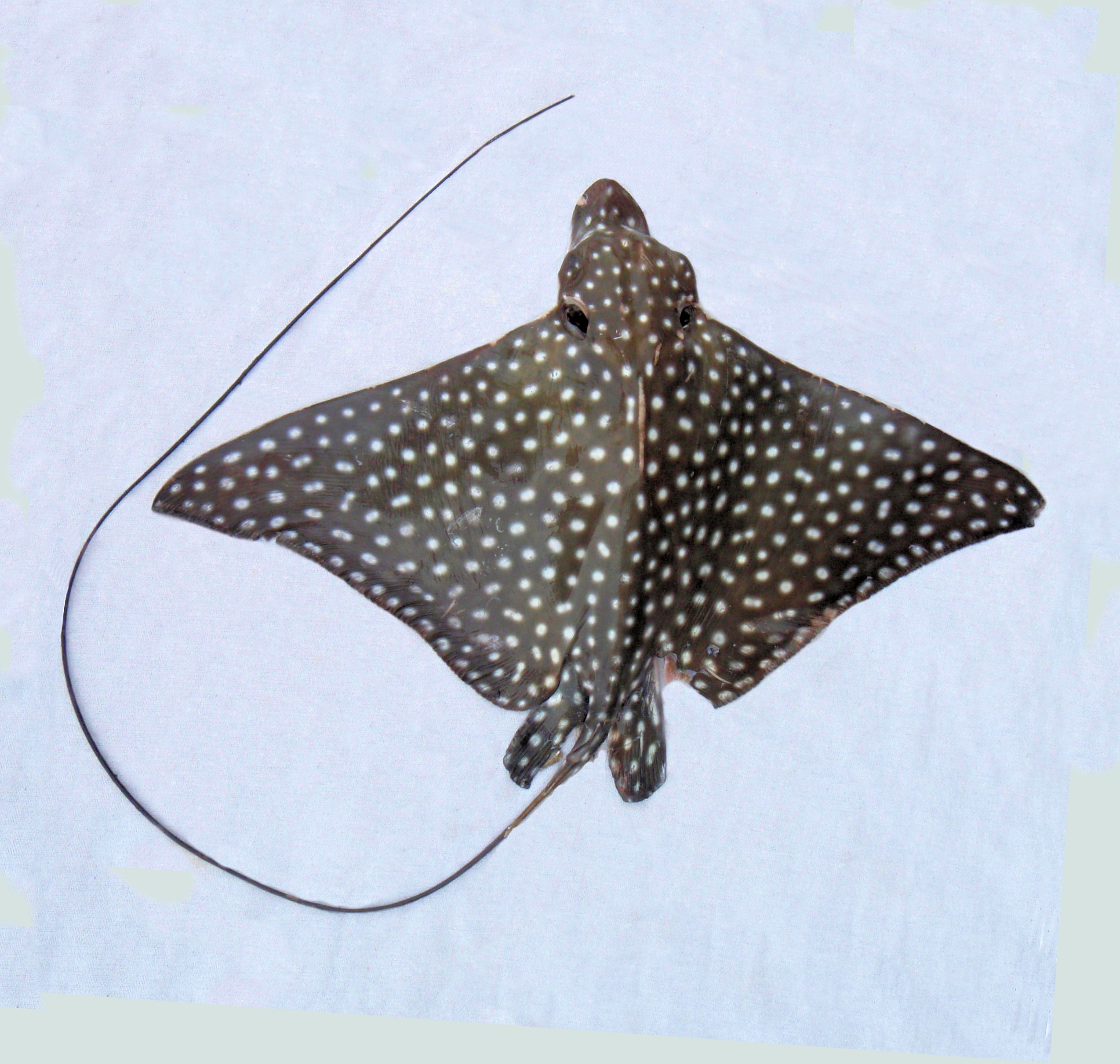
Spotted Eagle Ray Mexico Fish, Marine Life, Birds and Terrestrial Life
The Hawaiian spotted eagle ray is also known as the bonnet ray, duck bill ray, or spotted duck billed ray, but perhaps no other name than hihimanu describes them so perfectly. This Hawaiian name means "magnificent" or "elegant bird.". With the grace of an eagle, this cartilaginous fish can be found gliding in shallow coastal waters.

Print of photo featuring a Spotted Eagle Ray in the deep blue
Spotted eagle rays can grow up to 17 feet in length, weigh up to 500 pounds and have a wingspan of up to 10 feet. Eagle Rays live close to the coast in depths of 3 to 60 feet and in exceptional.

Spotted Eagle Ray Jumping Photograph by Bradford Martin Pixels
Take a closer look at the Spotted Eagle Rays who thrive in the Galapagos environment. Informative clip from the BBC Natural history series Galapagos, which e.
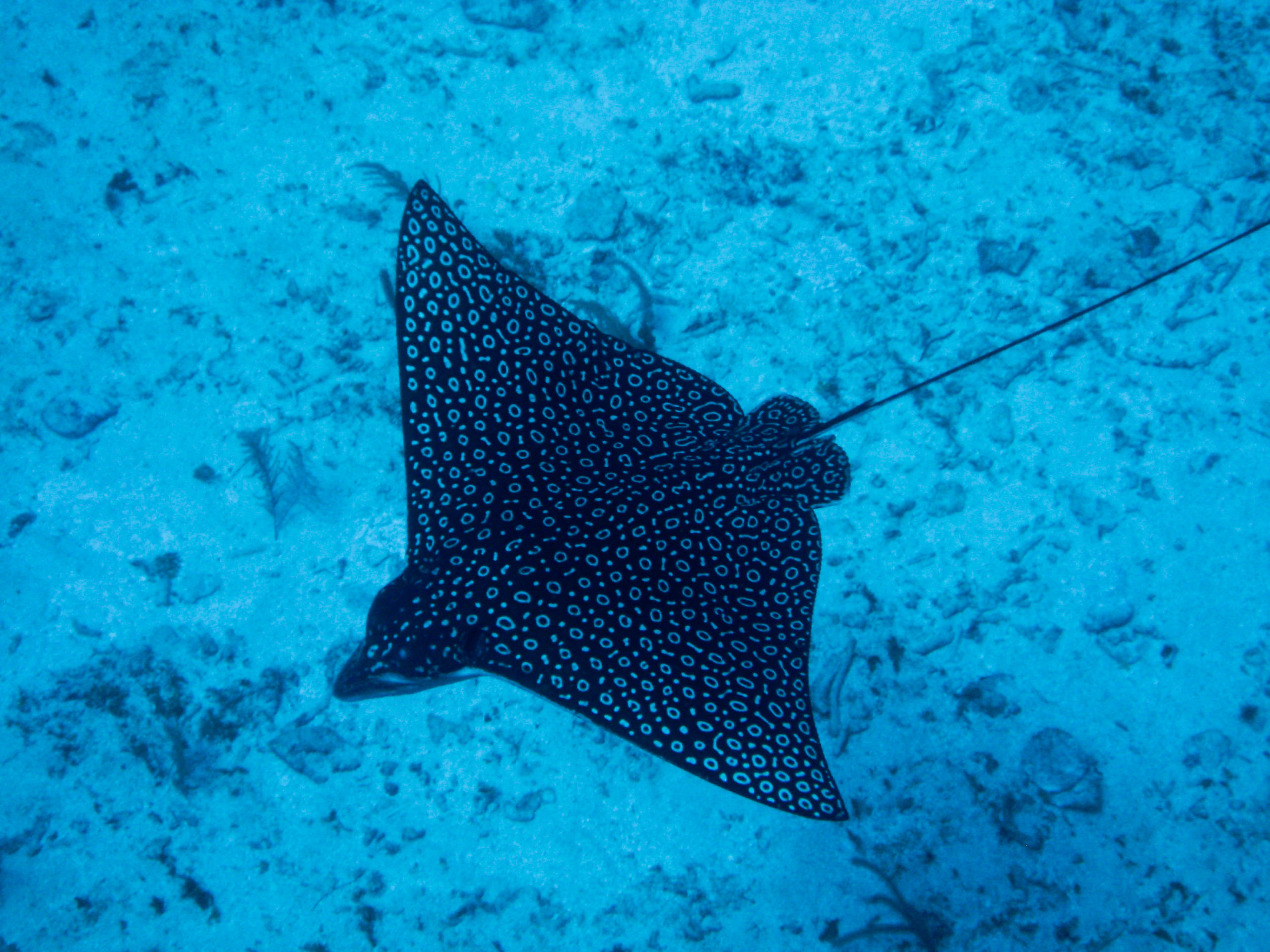
National Marine Sanctuary Foundation
The spotted eagle ray is a popular display aquarium specimen and is often seen in public aquaria facilities. Danger to Humans. Generally a shy species, spotted eagle rays are wary of divers and are difficult to approach. However, it is considered potentially dangerous to humans due to the venomous tail spines that can inflict serious wounds.
2.jpg)
FileSpotted Eagle Ray (Aetobatus narinari)2.jpg Wikipedia
Spotted eagle rays are ovoviviparous, meaning the eggs develop and hatch within the mother. Mother gives birth to live young. Gestation takes about a year, and a litter can be up to 4 pups, each about a foot in width at birth, perfect miniature versions of adults. They reach sexual maturity in 4 to 6 years and typically return to the same.
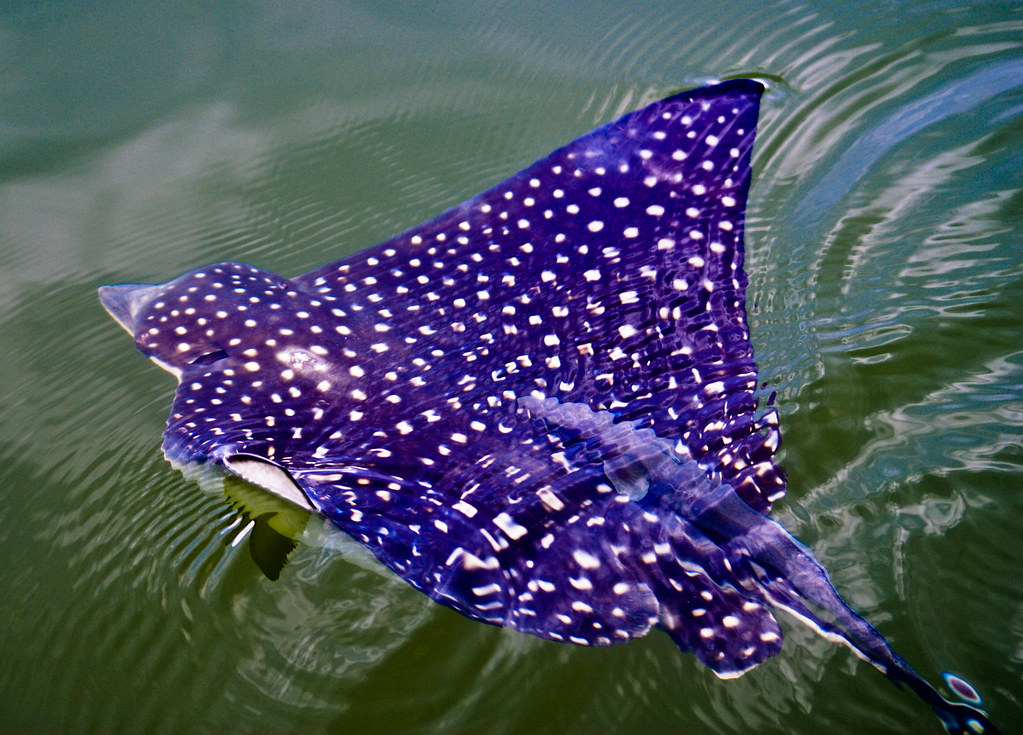
Spotted Eagle Ray spotted eagle ray in Florida Rob Moffitt Flickr
Aetobatus narinari (spotted eagle ray) is globally distributed throughout tropical and warm temperate waters as far north as North Carolina, U.S.A. in the summer and as far south as Brazil. This species has also been known to inhabit the red sea and oceanic waters surrounding the Hawaiian islands. Its latitudinal range spans from 43°N to 32°S.

Spotted eagle rays can "fly" through the water Oceana YouTube
The Spotted Eagle Ray (Aetobatus narinari), known for its striking spotted pattern, is widely distributed in tropical waters around the globe. The Manta Ray (Manta birostris), the largest of the eagle rays, can have a wingspan of up to 23 feet (7 meters).

Spotted Eagle Ray 1 Photograph by Kirchgessner Pixels
The spotted eagle ray complex is listed as NEAR THREATENED by the IUCN. However, this is based on the incorrect assessment that Aetobatus narinari is a globally occurring species. The revised distribution is far more limited (see Distribution above). The Western Atlantic population probably faces a considerably lower threat level.
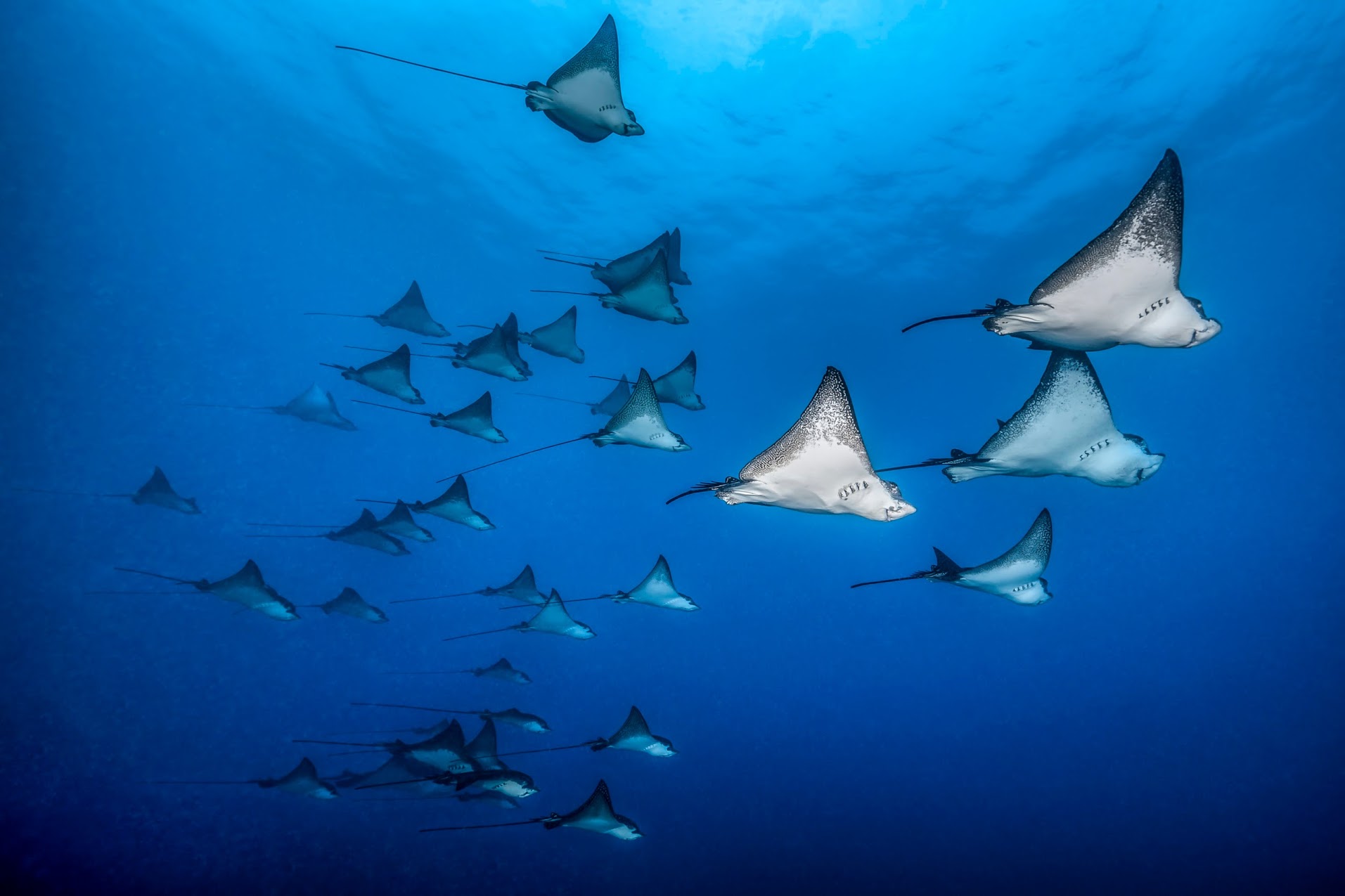
The Spotted Eagle Ray TOPDIVE
Spotted eagle rays are one of the largest species of eagle rays, with a wingspan that can reach up to 10 feet (3 meters). They can grow to be up to 16 feet (5 meters) in length and can weigh up to 500 pounds (225 kilograms). The shape of their body is flattened, with a broad disc-shaped head and a long, whip-like tail.

Real Monstrosities Spotted Eagle Ray
Physical Characteristics. Adult spotted eagle rays can reach a width of 10.8 feet (3.3 m) and a total length of 16.4 feet (5 m) with an undamaged tail. Can reach a maximum weight of 507 lbs. (230 kg). Its body, or disc, is very angular and thick, with a broad snout that is flat and rounded like a duck's bill.
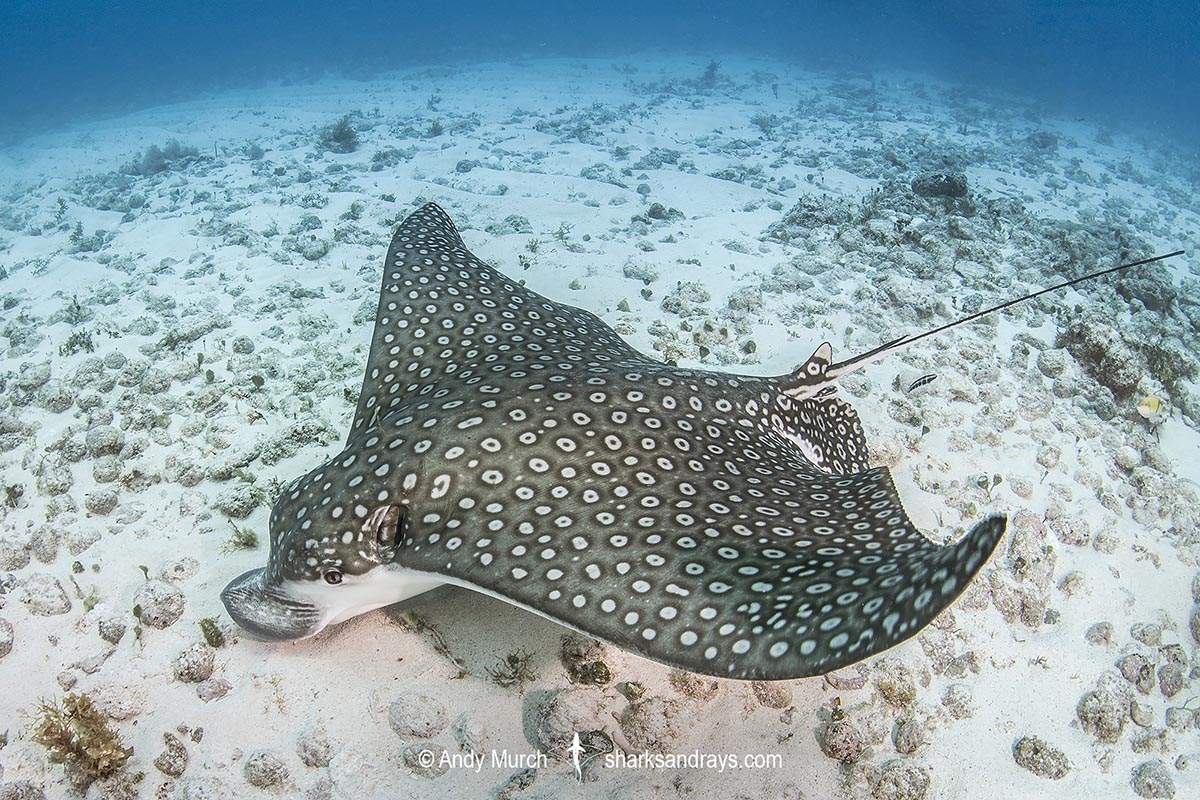
Spotted Eagle Ray Aetobatus narinari
Spotted eagle rays are ovoviviparous animals, meaning the females retain the eggs inside of their bodies. The eggs hatch while still in the mother and embryos receive nutrition from the yolk sac and then receive additional nourishment from the mother's uterine fluid. The female gives birth to live young (MarineBio).